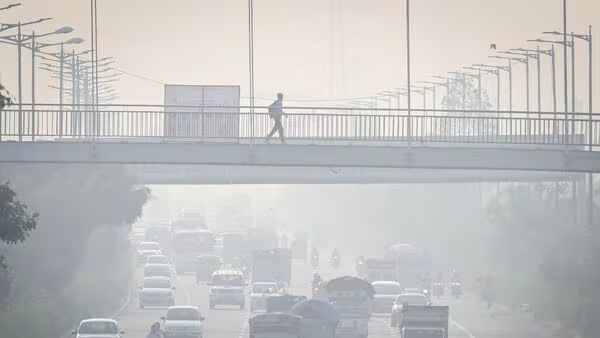Mumbai’s Air Quality Plunges into Dangerous Levels
Mumbai’s air quality has worsened significantly, as the city was enveloped by a thick blanket of smog on Thursday, leaving residents to grapple with hazardous air conditions. The city, which typically enjoys clear skies, experienced unusually low visibility and heavy smog, making it feel like dusk during the daytime. Scientists attribute this phenomenon to low wind speeds combined with high humidity levels, which trapped pollutants in the atmosphere, causing them to remain suspended.
The Air Quality Index (AQI) across the city ranged from 200 to 300 on Thursday, categorising the air quality as “poor” to “very poor.” Areas such as Borivali, Malad, Colaba, and Deonar recorded AQI levels above 200, indicating significant air pollution. Colaba, in particular, saw an alarming AQI of 270, while Borivali’s AQI surged to 280. Such levels pose substantial health risks, particularly for those with pre-existing respiratory conditions. SAFAR, the government air quality monitoring agency, confirmed that the city was experiencing smog rather than fog, as dust particles and pollutants became trapped under stable atmospheric conditions. Sunil Kamble, Director of the Regional Meteorological Department, explained that the drop in wind speeds and the high humidity contributed to this weather condition, which typically occurs during the cooler months.
The temperature in Mumbai on Thursday reached a maximum of 30.5°C and a minimum of 19.1°C. However, the humidity levels were significantly higher during the day, reaching 79%, compared to 70% at night. This increased humidity combined with particulate matter (PM10) resulted in a dangerous pollution spike. PM10 levels in locations like Colaba (308.4 µg/m³) and Borivali (216.2 µg/m³) were well above the acceptable limits. Experts have warned that smog-induced conditions can have serious repercussions for respiratory health. Dr. Lancelot Pinto, a consultant pulmonologist at PD Hinduja Hospital, highlighted that cold air during winter traps pollutants like particulate matter and carbon monoxide in the lower atmosphere, aggravating conditions for those with asthma, bronchitis, and other respiratory disorders.
Dr. Sulaiman Ladhani, a pulmonologist at Wockhardt Hospitals, observed a significant increase in patient visits, particularly for flu-like symptoms, exacerbations of chronic obstructive pulmonary disease (COPD), and asthma. Hospitals have reported a rise in emergency cases, with many patients struggling to breathe due to the polluted air. In light of the worsening air quality, health experts are urging vulnerable groups, including children, the elderly, and individuals with chronic respiratory conditions, to take extra precautions. Dr. Salil Bendre, Director of Pulmonology at Nanavati Max Super Speciality Hospital, noted that visits to outpatient departments have doubled in recent weeks, primarily due to breathing difficulties and dry coughs.
To mitigate the health risks associated with the deteriorating air quality, experts recommend limiting outdoor activities, especially during peak pollution hours. They also advise wearing masks, using air purifiers indoors, and engaging in indoor breathing exercises like pranayama to strengthen respiratory muscles. Staying hydrated is also crucial for maintaining lung function and clearing the airways. With smog set to persist over the coming days, experts are urging Mumbai residents to remain vigilant, particularly those with respiratory conditions, as the city faces another season of air quality challenges.




